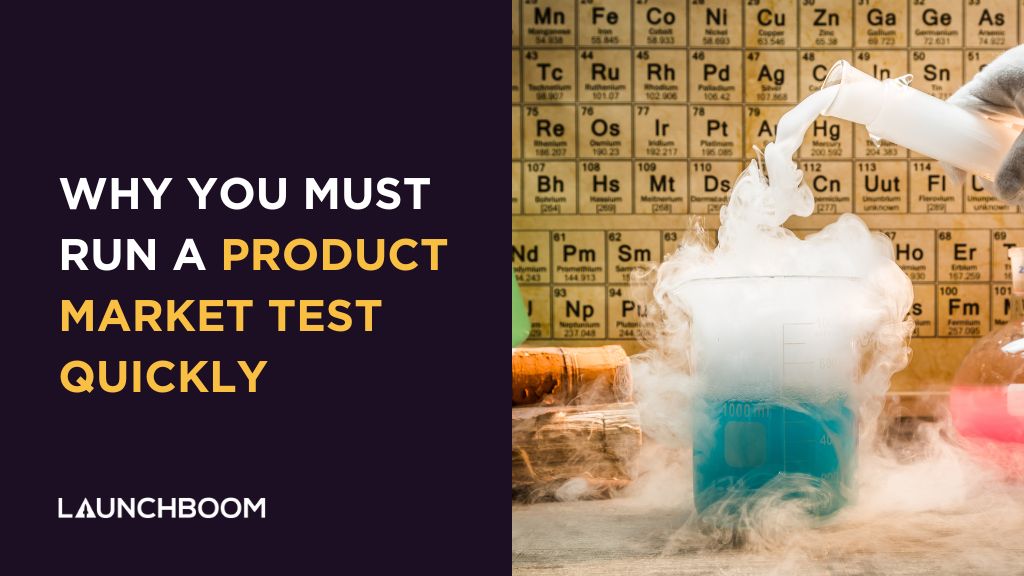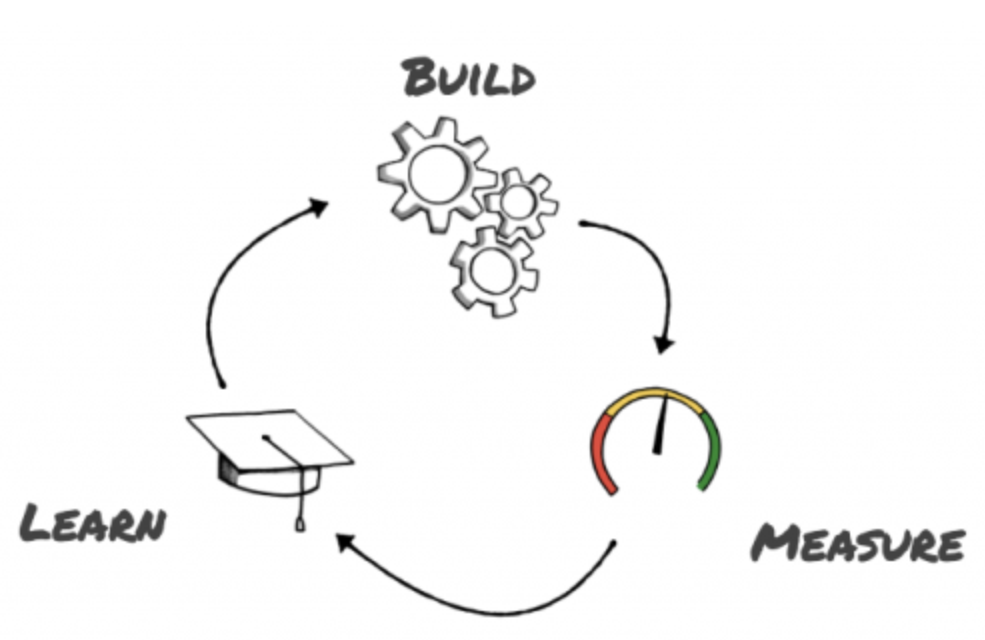
At the beginning, LaunchBoom’s business model was different than it is today. If we decided to work together in 2015, that meant our team and your team were committing to working together for at least the next 6 months. This required a big investment of time and money from both parties, which meant a great deal of risk.
We saw a lot of success with our initial clients, but then we began to see a campaign or two struggle early on. These issues included…
- Building the prelaunch email list was much more expensive than we thought.
- Realizing that the original positioning of the product wasn’t resonating.
- Beating our head against a wall trying to make it work.
We would launch and surprise, surprise… it didn’t work.
Having a few experiences like this as a company really forced our team to ask some difficult questions — including the most important question of all: how can we know if a campaign is going to be successful before we launch on Kickstarter or Indiegogo?
The answer: we test it.
Instead of having clients make a huge investment of time and money into their product launch, we thought… why don’t we drastically reduce the risk by testing the product in the market before we launch to ensure viability?
Furthermore, everyday we hear the same questions:
- How do I raise $[insert any amount here] on Kickstarter or Indiegogo?
- How much do I have to spend on advertising?
- What will be my return on investment?
Whoever is answering these questions without testing your product first is lying to you.
Sure, someone can use their intuition and past experience to give you their opinion, but that opinion isn’t using any data that’s directly tied to your product. To answer those questions more accurately, you must spend time and money on advertising to test product positioning and audience targeting.
We call this system TestBoom.
Here’s an overview of how the TestBoom system works:
- Develop initial hypotheses of how your product should be positioned in the market.
- Build a Reservation Funnel and drive traffic to test your hypotheses.
- Analyze the data using a predictive model.
This testing system is incredibly important to learn and luckily, it’s something anyone can do.
Why Does This Matter So Much?
Even though launching through crowdfunding drastically reduces the risk vs. other options, it still has its own risks. Everything does. Adopting a testing mindset and learning a testing system will decrease that risk even more.
People who are successful in business understand that it’s just a never ending set of experiments. There will constantly be new business ideas you’ll want to prove or disprove (hypotheses). These new business ideas will have to be tested (experiments). These experiments will give you data to prove or disprove your hypotheses (analysis).
Ah yes, we’re back in science class. Sorry! But understanding and using experimentation is key to not only your launch success, but your business success.
A framework I love is called the Build, Measure, Learn loop by Eric Ries in his book, The Lean Startup.

The framework is simple.
Build an experiment. Measure the data. Learn from the data.
This process will allow you to answer important questions about your product such as:
- Do people want to buy my product?
- Which way should I position my product?
- How much will I have to spend on ads to achieve my goals?
Right now, you have a product that you think people want. You do not know that people want it yet. It’s a pure hypothesis.
It’s very easy to get emotionally attached to your product. I get it. It’s almost like your baby. But going into a launch believing that there is no way it’s not going to be wildly successful is a recipe for disaster.
I’m not saying you can’t have big goals, but there’s a big difference between aiming for a big goal and believing there is no way you won’t achieve it.
To be blunt: the testing mindset requires you to be open to being wrong.
Let me tell you the story of Heshika and his product, SPRYNG.

When we first started working with him, he told us that he thought his product would be best for athletes who needed a muscle recovery tool. The product would work for athletes, but we also knew it would work for people that were more sedentary and had circulation problems. Essentially, the opposite audience in terms of physical fitness.
Neither Heshika or the LaunchBoom team knew which positioning would be better. So we tested it and let the data decide.
We had half of our ads targeted towards athletes and half of our ads towards people with circulation problems.
Here’s the copy that targeted athletes:
“Monster leg sessions in the gym, long days at the office, and marathon runs… Spryng is there for you, ready to aid your recovery and make you feel great, no matter what!”
Here’s the copy that targeted people with circulation problems:
“Almost 90% of the blood returning to your heart from your veins comes from your calves. Exercise and long bouts of sitting/standing can weaken the muscles which makes them less effective in moving the blood, which can result in a lot of swelling and pain (known as blood pooling). This recovery tool focuses on actively compressing that area to help get that blood moving!”
The result…
The ads targeted towards those with circulation problems did much better. Because of that, we changed our positioning and started to spend more heavily into that audience.
By setting up an experiment to test our hypothesis, we were able to learn extremely valuable information early in the prelaunch. This was all because Heshika had a testing mindset and followed our testing system. His campaign went on to raise $1,075,782 on Kickstarter and Indiegogo InDemand.
How This Works
Here are the things you’ll need to know how to set up in order to create your experiment:
- Build your Reservation Funnel
- Drive traffic with Meta ads
- Track the right metrics
I suggest that you plan to initially spend $1,000 to $2,000 in ad spend on this initial experiment. Spending this much usually will give you enough data to answer very important questions.
Let’s give an example.
REAL EXAMPLE: AUTHOR CLOCK
Author Clock is an innovative clock that uses quotes from books to tell the time of day. There hadn’t been a product like it before on the market so the testing period was especially important.
We created a Reservation Funnel, started driving traffic with Meta ads, and collected data over the course of two weeks.
At the end of our test, our metrics looked like this:
- Ad spend: $2,027
- Total VIPs: 173
- Total Non-VIPs: 2,804
We then put these metrics into a simple predictive model.
The model works by taking the data we collected and then modeling three different scenarios. The three scenarios will give us a range of results from low to high. Why three different scenarios?
Because no model is 100% accurate. If they were, life would be a lot easier because we could predict the future. But giving a spread of future scenarios gives you a good idea of what’s possible and is still very useful.
The first thing we did for Author Clock was plug in the data in the Variables section of the model. You can see that below:

That then calculated three possible scenarios for the return on ad spend (ROAS) we may see if we were to launch right now. You can see that below:

We also give a nice graph visualization so you can see the spread between the three scenarios.

In the case of Author Clock, all three scenarios looked very good. This made us feel confident that people wanted the product and we should move forward with the current positioning. Instead of going back to the drawing board with a major pivot in positioning, we decided to move into scaling the ads.
Test As Soon As Possible With Photorealistic Renderings
The sooner your test, the better. Because once you go through the initial testing process, you’ll have answers to very important business questions. With those answers, you can then make a decision if you want to pivot or continue down the same path.
The most common reason why creators don’t start testing sooner is because their “prototype is not ready.”
Don’t let that slow you down. Use photorealistic renderings to get product imagery quickly and affordably. This can drastically reduce the time it takes you to get your initial testing complete.
As the name suggests, photorealistic renderings are photorealistic images of your product that are created by a computer. They are used everywhere in marketing and you probably see them everyday even without knowing it. That’s because they’re super useful.
Typically you can make them faster and more affordably than professionally shot photos. Plus, since they’re made with a computer, you have a lot of control over the appearance of your product – from the materials used to the lighting and environment. This allows you to create the exact image you want.
I see a lot of clients create photorealistic renderings when their prototype isn’t photo ready. With the renderings, they can start their prelaunch marketing efforts while they finish their prototype. Eventually, they’ll get the real photos, but the renderings can speed up the process.
THEY WORK
I want to shatter a myth about photorealistic renderings. It’s a common misconception that photorealistic renderings won’t perform well in marketing campaigns. The idea is that consumers will prefer real images and decide not to buy.
We’ve launched three campaigns that were 100% photorealistic renderings.
Yes, you read that right. There was not one real photo used in any of the three campaigns. These campaigns were boutique hotels and were launched on Indiegogo (because Kickstarter doesn’t allow photorealistic renderings). Combined, we drove $2,635,782 in presale revenue for these three campaigns.
Here’s an example with the first hotel we launched called Bubble Hotels:

I’m not telling you this to encourage you to (1) launch on Indiegogo or (2) only use photorealistic renderings. This section is simply to prove that photorealistic renderings are capable of driving millions in revenue.
There Is No Wasted Ad Spend (when spent right)
If you follow the strategies I taught you in this post, there is no wasted ad spend. It is all money spent on education. This is a very important distinction.
If your initial test results aren’t very good, it’s easy to be discouraged and say “why did I waste all this money on ads?” That’d be the wrong way to look at it.
Instead, you want to adopt a testing mindset and systematically learn with each additional experiment. By following this framework, you’ll launch with an incredible amount of learnings and most importantly, confidence.




